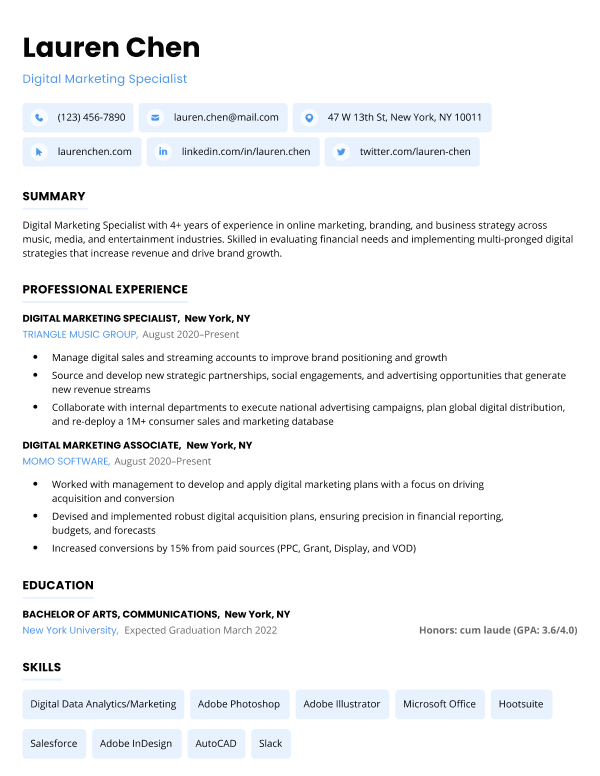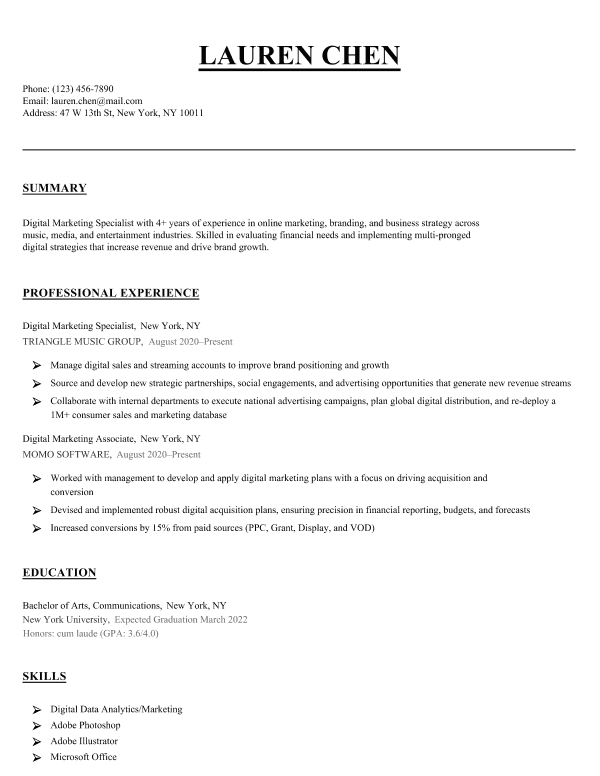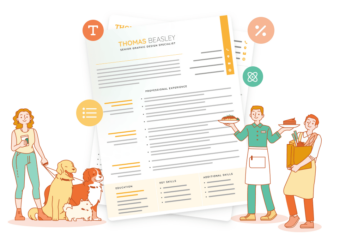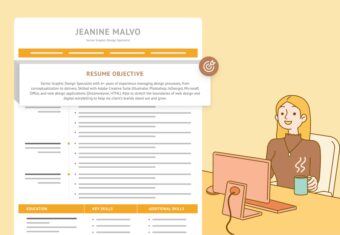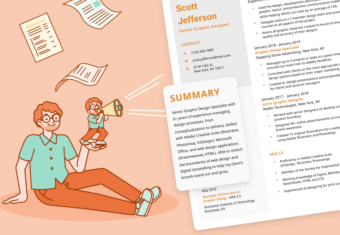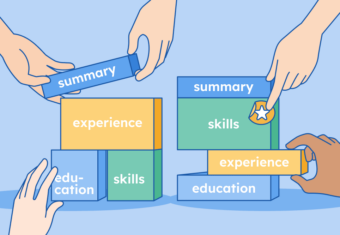To get accepted into college, you need an excellent college application resume.
And because there are hundreds of other prospective students competing for the same spot, you want your resume for college to stand out.
Our writing tips and resume example show you how to write a resume for a college application and increase your chances of getting into the college of your choice.
Our free-to-use resume builder can make you a resume in as little as 5 minutes. Just pick the template you want, and our software will format everything for you.
What is a college application resume?
A college application resume is a one page document that describes your talents, skills, work, or volunteer experience, and a brief overview of your academic achievements.
To win a spot in your chosen college, you need to showcase important information about yourself that will give you an advantage over other applicants.
To create that advantage, you should learn how to make a resume for colleges that highlights your skill set and personality.
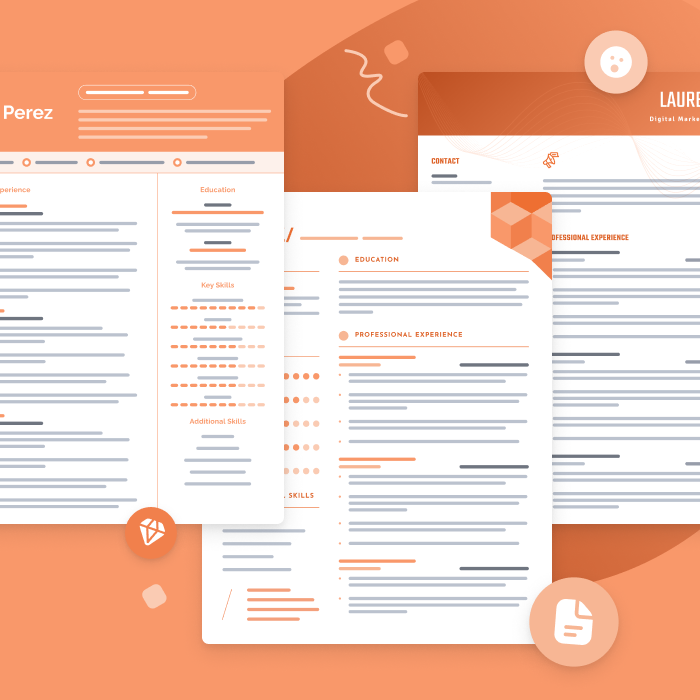
The best resume templates for 2024
One of the best ways to make your resume is by filling out one of our free resume templates. All our templates are designed by experts and free to download for Microsoft Word or Google Docs.
How important is a college application resume?
A college application resume can help you get into universities, but it can also hurt your chances of getting accepted — so writing a good college resume is important if your goal is to go to a university or community college after graduating high school.
Also, note that writing a high school resume for a college application is different from writing a regular resume.
Colleges want to know you can balance your academic life with other activities like sports or clubs.
Admissions officers also want to see that you’re able to take initiative and be self-motivated, so highlight any projects where you’ve taken the lead or been proactive.
So tailor your information to the specific school or program you’re applying to by including relevant extracurricular activities, volunteer experience, leadership roles, awards, and honors.
For example, if your target college is well known for a specific sports program, then show your love of sports by listing the sports teams you’re on and your position on those teams.
What should you include on a resume for a college application?
When writing your resume for college admissions, list your relevant experiences and skills. Type your name, phone number, and email clearly at the top of your resume before you write anything else.
Here’s what to include when writing your college application resume:
- Resume header (with contact information)
- Resume objective statement
- Education section (with GPA, SAT/ACT scores, class rank)
- Extracurricular activities
- Work experience
- Volunteer work
- Hobbies and interests
- Relevant skills
- Awards and publications
College application resume template
To make it easier for you to write a college application resume, check out our template below that you can copy, paste, and customize:
1. Resume Header
FIRST AND LAST NAME
Email: youremail@gmail.com | Phone: 713 220 7452 | Address: 53 Lance Avenue, Dallas, TX 30217
2. Resume Objective
Motivated and dependable [student/individual] seeking to pursue my academic goals and career path at the distinguished [Name of University]. Currently studying at [Name of school]. Possess [relevant skill #1], [relevant skill #2] and a passion for personal development and student involvement. Looking for an opportunity to develop my knowledge and make a significant contribution as a student for the upcoming [# of year] school year.
3. Volunteer Experience
Most Recent Volunteer Title
Employer Name | Location | Start Year–End Year
- Use 3–5 bullet points for each entry to explain your responsibilities
- Begin each bullet point with a resume action verb to portray yourself as a student leader so college admissions committees can see what you’ve done (e.g., Raised $10,000 in fundraising efforts for Hurricane Alex which resulted in helping 1350+ displaced citizens in the Central Caribbean)
- Add hard numbers (like percentages, dollar amounts, time spent, number of teammates) within your bullet points to highlight your accomplishments (e.g., the total number of hours you volunteered at an event or worked part-time)
Earlier Volunteer Title
Employer Name | Location | Start Year–End Year
- Use past tense verbs if the experience has already happened (e.g., “supervised,” “guided,” “won”)
- Be specific when writing your resume (e.g., list the actual names of events you were a part of, number of people you assisted, or tools and software you used)
4. Education
High School Name | Location | Graduation Date (or the date you intend to graduate)
For example, Ohio Liberty High School, Columbus, OH | Graduation: 2022 | GPA: 3.8/4.0
- If you don’t have any volunteer experience, list your education at the top of your college resume (underneath your resume header)
- Include your academic highlights and relevant coursework using hard numbers (e.g., Coached 15+ elementary students in freestyle swimming, basic first aid, and breathing techniques from September 2020 until June 2022, resulting in my winning the “Top Student Coach” award of June 2022)
5. Skills Section
List 3–6 hard and soft skills as bullet points that relate to the college’s values, culture, or mission statement (e.g., organizational skills, leadership skills, teamwork skills, and people skills are skills that show you’ve made positive contributions in past roles)
6. Additional Experience
Show employers more of your accomplishments or additional skills by including other sections such as your hobbies and interests, extracurricular activities, or foreign language skills
Resume for college application example
The best way to work out what to put in your college admissions resume is to read the resumes of other successful applicants. Here’s a student resume example for a college application:
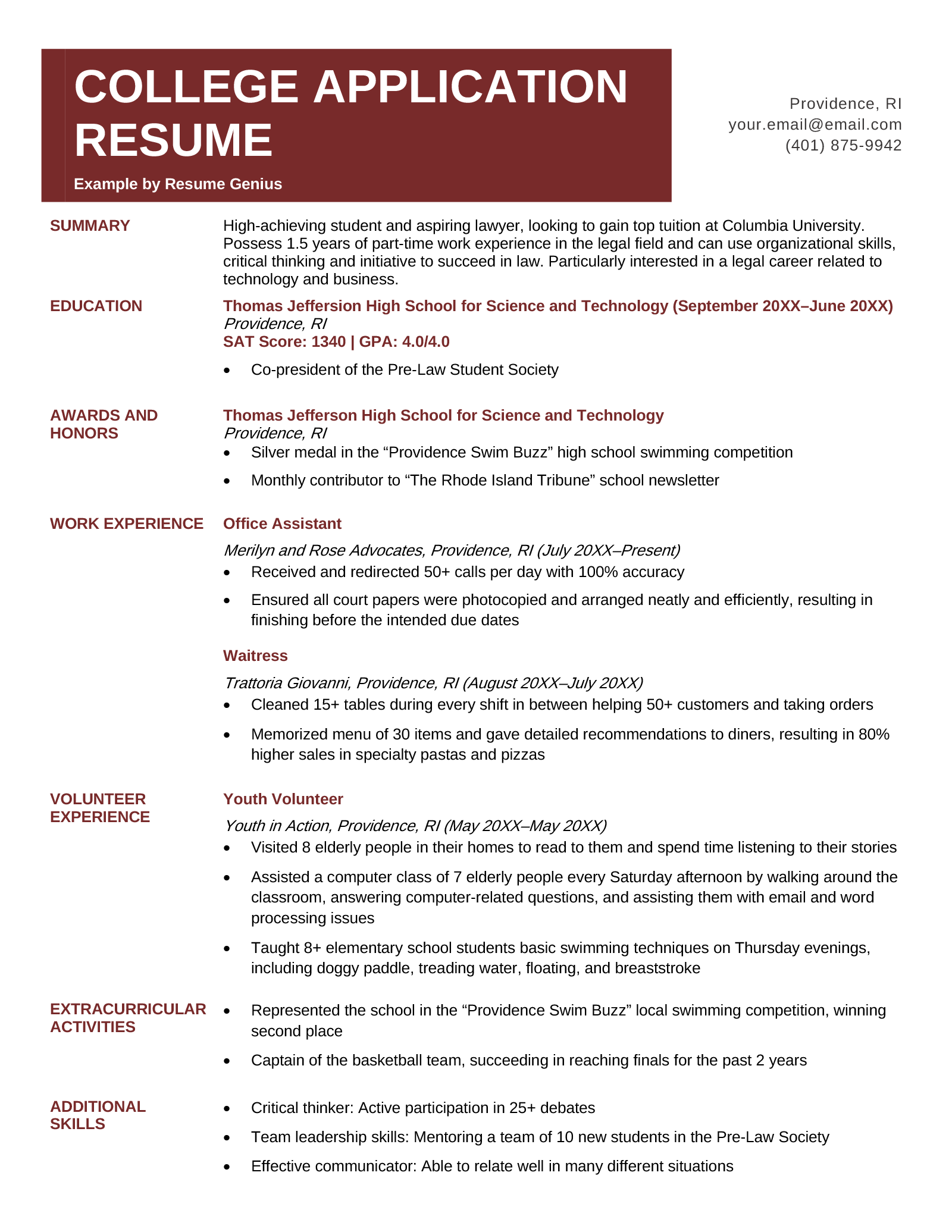
8 tips for writing a college application resume
As a student, you should present a resume that showcases your personality, academic accomplishments, and extracurricular activities.
So here are eight ways to capture the attention of college admissions committees:
1. Tailor your resume to each college
You might have come here looking for how to create a resume for college, but the truth is you’ll need to create several — one for each college you’re applying to. Why?
Because each college is different, and you should adjust your resume to reflect the requirements of each college.
So study the college you want to apply to by reading its requirements carefully. Look for what features stand out at the particular college and build on them.
For example, if you’re applying to an arts-focused school, try starting your resume with a resume section called “creative accomplishments” or “artistic talents.”
2. Include resume keywords for your college resume
Use appropriate resume keywords when writing your college resume.
Colleges and workplaces use applicant tracking software (ATS) to filter, rank, and review applicants, so ensure your resume uses specific keywords that the software identifies for your college application to be considered.
So write an ATS-friendly resume by making sure your headings are clear, your listed experience and skills are chronological, and the right keywords are in the right places.
3. Format your college application resume correctly
What should your college resume look like? While there’s a range of options, go for a simple, professional format, rather than something too complicated.
That way, the admissions committee can locate your qualities and achievements easily — without being distracted by the design.
Choose a professional resume font like Times New Roman or Arial, and use it throughout your resume. Set your font size to 10–12 points so it’s easy to read.
Set the heading text larger for each of your headers so they clearly separate each section of your resume.
Finally, set the margins to 1” on all sides to give your resume a professional finish.
4. Write an excellent resume objective statement
A resume objective sits at the top of your resume and details your training, credentials, and skills.
Keep your resume objective clear and focused by targeting it to the college’s needs by using 2–4 concise sentences to explain why that particular college will help you accomplish your goals.
Use the rest of your resume to back up everything you write in your resume objective.
This is an example of a college applicant’s resume objective:
Example of an applicant's college resume objective
An ambitious and conscientious high school graduate with a creative mind, seeking admission to Baylor University to further my skills in fashion. Great interpersonal skills, exceptionally stylish, and ready to take the fashion industry by storm.
5. Include a detailed education section
Your resume’s education section provides essential details about your educational background.
When writing a resume for college, there are a few things that make a great education section.
To start, include the most important details first (like graduation year) so an admissions member reading this section can easily access your information.
Also, keep the details in your education section short and concise so you can showcase your most relevant information.
For instance, try using resume bullet points to break up long lists of activities, honors, and awards into more manageable chunks.
If your grades are lower than expected, you may want to include your GPA closer to the bottom of your resume so that the committee can view your other top skills, activities, and experience rather than dismissing your resume because of your grades.
6. List activities on your college resume
Resumes for college admissions are more than just your academic records and extracurricular activities.
Your resume shouldn’t be just a list of information — it needs to describe who you are as an applicant. So make sure to tell your story instead of only summarizing your grades and extracurricular activities.
What’s your passion? What do you like to do? If you’re interested in politics and ran for student government, mention that you competed as a political candidate in your school.
If you love to write and you volunteered to write for your school newspaper, state that you served on your school newspaper.
7. Highlight your work and volunteer experience
Mention any volunteer services you did like babysitting, raking leaves, dog walking, mowing lawns, or any other work.
Colleges want action takers — students who are keen to make a difference in society — and to stand a better chance, address both your hard and soft skills.
Hard skills are the abilities you acquired through learning, practical experience, or training. Some examples are coding, foreign language skills, driving, and computer skills.
Soft skills show how you relate with others in a workplace or college setting. These personality traits include time management skills, listening skills, communication skills, critical thinking, or problem solving skills.
Schooling, working, and volunteering helps you develop both types of skills. And if you can show the admissions board that you’ll relate well with fellow students in their institution, you’re more likely to get accepted in their college.
So ensure you add both soft and hard skills in the skills section of your college application resume.
Don’t be tempted to lie about your achievements. You may think this makes a better college application resume but being dishonest may hurt your chances of entering or staying at a college if admissions committees find out the truth.
8. Emphasize specific achievements rather than general duties
When listing your extracurricular activities and achievements, write experiences that are relevant to a particular college to stand a better chance of getting admitted.
List specific achievements instead of generalizing by using hard numbers and relevant details, so that the admissions committee can be clear about where you stand in relation to other applicants.
For instance, instead of just saying you like sports and are part of student clubs, your list of achievements should include which sports teams, clubs, and other activities you’ve been involved in at school.
Here’s an example of a college resume’s experience section with hard numbers:
College resume example with hard numbers and details
- I volunteered in a community clean-up and established garbage bins that saw a 95% reduction in litter
Next, take a look at this college application resume example without hard numbers:
College resume example without hard numbers and details
- I was part of a community clean-up
Try separating these activities into categories such as “volunteer work” and “community service” to make it easier for the admission board to scan your resume.
Click to rate this article
4.3 Average rating



